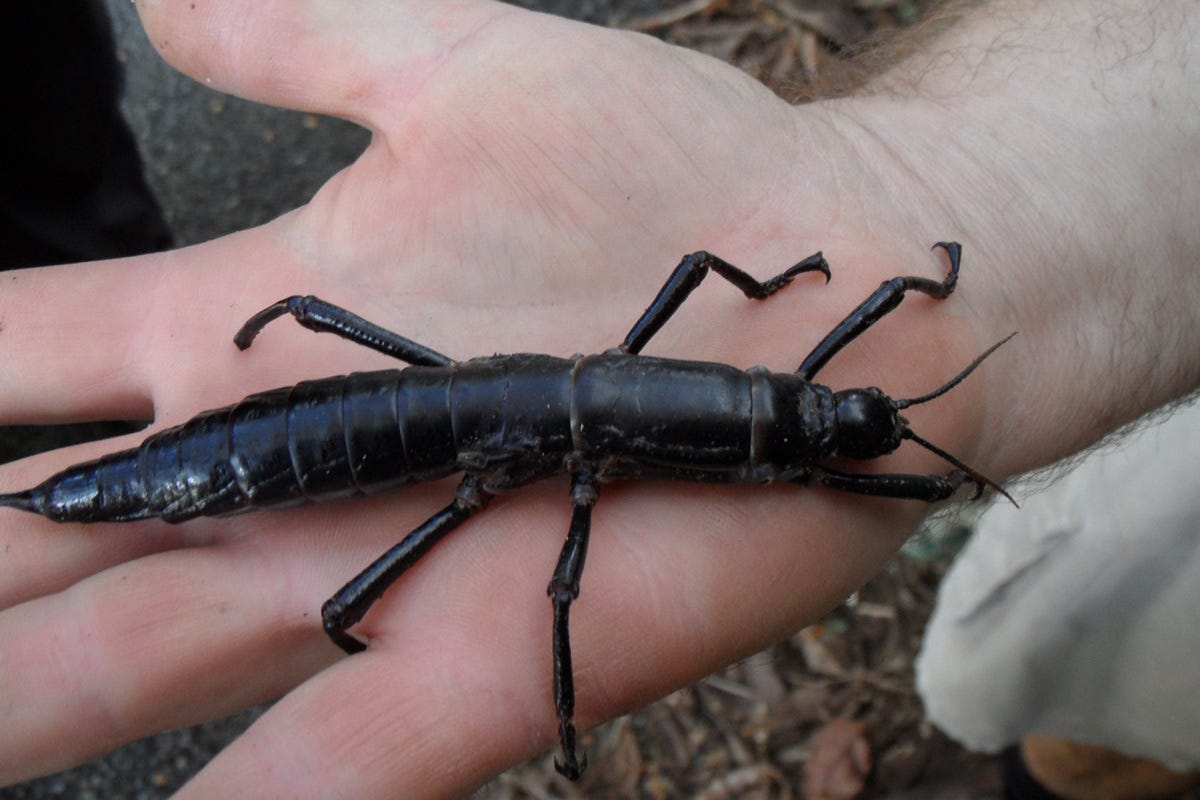I Like Big Bugs and I Cannot Lie
By Shannon Jones

Imagine a bug. No, larger. No, still larger. Imagine a dragonfly with a wingspan of almost two feet, or a centipede eight feet long. If you travelled back in time, you might have seen either of these creatures, or some of their other, equally massive, friends. But why did prehistoric insects grow so big, and why aren’t modern-day bugs as large?
The answer starts with the oxygen content of air. During the Carboniferous period (359.2 to 299 million years ago), air had an oxygen content that was roughly 50 percent higher than today due to volcano eruptions and massive inland swamp forests. That higher oxygen content has been attributed to larger land animals overall — it’s much easier to breathe when oxygen is so plentiful, and some dinosaurs had adaptations that took advantage of the air’s unusually high oxygen content (For more on gigantism in dinosaurs, see Titanosaurs, Gigantism, and the Reason for Bigness in Issue 21.). However, scientists think that this may not be the entire reason for gigantic insects.
Insects reproduce externally, usually incubating larvae in water. This leaves the larvae vulnerable to their environmental conditions. Larvae often cannot regulate what their body takes in, as they have no defined exoskeletons. For example, when oxygen content rises too high, adult damselflies can close their spiracles (openings in the exoskeleton) in order to help regulate the oxygen they take in. Larvae aren’t able to do the same, and are left taking in toxic amounts of oxygen. This would be problematic in a hyper-oxygenated world, especially as water acts as an oxygen sink and would contain even higher levels than the surrounding air. In order to defend against this, larvae may have been selected for size — larger larvae would have a larger body, and therefore a smaller oxygen to volume ratio. Progressively larger larvae led to larger adults, until insects were gigantic.
Though oxygen content in air dramatically decreased with the Cretaceous-Tertiary extinction event (the meteor strike that killed the dinosaurs), the end of the supermassive insects came much earlier. Their decline appears to be directly linked with the evolution of another group you’re probably familiar with — birds. In the Jurassic and Cretaceous periods, as dinosaurs began to evolve the ability to fly, researchers have showed that the runaway growth of insects stopped and began to decrease. As bird-like dinosaurs became more prominent as predators, traits like maneuverability in air became more necessary than massive size, which led to a reduction in the sizes of insects.
Today, few insects are as large as their ancestors once were. However, some do grow to be large by today’s standards, and these have a tendency to be endangered. Dryococelus australis, affectionately known as the “tree lobster,” is a kind of nocturnal stick insect that grows to be about six inches long. Tree lobsters once lived on Lord Howe Island in the Pacific, and are one of the few insects still living that exhibit extreme growth as part of their larval process. As the heaviest flightless insect in the modern world, they were slow enough that islanders used to catch them as fishing bait. When a shipping boat crashed on Lord Howe Island in 1918, the rats on board found the slow, heavy, flightless insects to be easy prey. By 1920, no tree lobsters remained on Lord Howe Island, and they were thought to be extinct. However, a small group of the insects was found in 2001 on Ball’s Pyramid, a nearby uninhabited island that consists almost entirely of sheer cliffs. After deliberation, the Australian government allowed four of the insects to be removed and entered into breeding programs. Today, there are roughly 13,000 tree lobsters in Australian breeding programs alone, and eggs are being shipped to zoos around the world in order to forestall the species once again becoming near-extinct. Scientists hope that the tree lobsters can soon be reintroduced to their natural habitat, but are apprehensive about islander’s reaction.
Today, bugs are commonly thought of as small pests that are easily squashed. Many readers will be relieved to know they will never come into contact with a prehistoric-sized insect. However, if you’re interested in getting a taste of the Carboniferous period, Lorde Howe Island or your local zoo might soon be a destination to see the largest insects left on the planet.